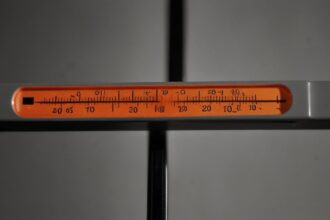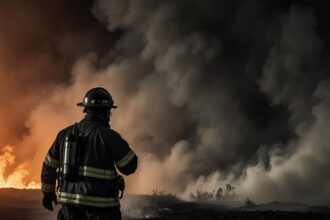Severe floods in Iowa and South Dakota force evacuations, while a national heatwave sets temperature records and sparks heat-related illnesses, demonstrating the widespread impact of extreme weather in the US.
Floods and Heatwaves Impact the US
Severe weather conditions continue to impact various parts of the United States. Iowa and South Dakota have experienced significant flooding due to days of heavy rainfall, while a heatwave has enveloped a substantial portion of the country, setting temperature records and increasing heat-related illnesses.
Flooding in Iowa and South Dakota
In Rock Valley, Iowa, a town of 4,200, residents were evacuated early Saturday morning as the Rock River flooded. Mayor Kevin Van Otterloo stated that the city received four inches of rain in 90 minutes, overwhelming the local infrastructure. The flooding rendered the town’s wells unusable, depriving residents of running water. Governor Kim Reynolds declared a disaster in 21 northern Iowa counties, including Sioux County.
In South Dakota, southeastern regions experienced heavy rainfall resulting in up to 18 inches of precipitation in some areas. Governor Kristi Noem declared an emergency. Sioux Falls, the state’s largest city, received more than seven inches of rain over three days.
National Heatwave
Across the United States, millions are enduring an intense heatwave. The National Weather Service issued heat warnings covering about 15 million people, with another 90 million under heat advisories. The heatwave has caused temperature records to fall in several cities. For instance, Baltimore reached 101 degrees, breaking a record set in 1988.
The heatwave has led to a significant number of heat-related illnesses. According to the CDC, regions like New England, the Midwest, and the Mid-Atlantic saw sharp increases in emergency room visits due to the extreme temperatures. In New England, heat-related visits spiked from 57 per 100,000 on Monday to 833 on Thursday.
Emergency Responses
Officials in affected areas have mobilized emergency responses. In Rock Valley, emergency teams used boats to rescue stranded residents, while in Sioux Falls, emergency services responded to numerous flood-related incidents including stranded drivers and stalled vehicles. Precautionary measures and advisories are in place across states experiencing extreme heat.
Authorities emphasize the ongoing risks despite some regions expecting relief from the heat early in the coming week. The NWS forecasts cooler temperatures for parts of the Midwest and Ohio Valley, albeit with above-normal temperatures persisting in many other parts of the country.
These climate events highlight the broad and severe impact of extreme weather, affecting daily life and public health across the United States.













